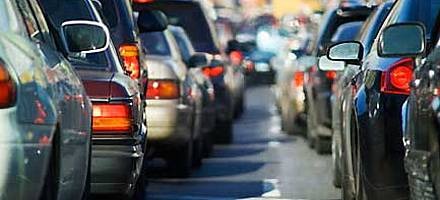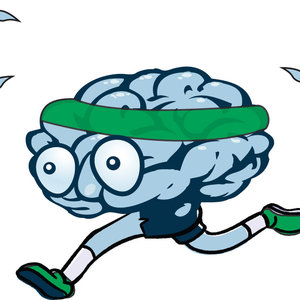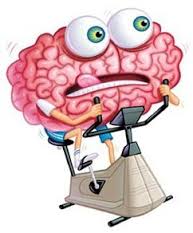A couple of weeks ago, when my (wonderful) massage therapist was working her magic on my wounded body, she said something that has stayed on my mind. She has been using myofascial release techniques to loosen the tight fascia that are binding my skeletal muscle and connective tissues, causing a good deal of pain. This tightness has restricted my motion in such a way that my body is pulled out of alignment, causing pain in my right hip. As I flipped over on my stomach for the second half of the massage session, I mentioned that I was having trouble breathing, due to sinus congestion. She made the comment that so many problems are caused by congestion—not only skeletal-muscle congestion and sinus congestion, but also heart failure (due to low cardiac output, resulting in the body becoming congested with fluid) and bowel obstruction (often caused by constipation).
 As I drove home from my massage session, I thought about her words. About congestion and how it affects our lives. The first thing that came to mind was the recent traffic congestion in Atlanta due to the ice on the highway, and of course the congestion on the George Washington Bridge. Those incidents paint a visual metaphor of the consequences of congestion… what happens when things stop moving.
As I drove home from my massage session, I thought about her words. About congestion and how it affects our lives. The first thing that came to mind was the recent traffic congestion in Atlanta due to the ice on the highway, and of course the congestion on the George Washington Bridge. Those incidents paint a visual metaphor of the consequences of congestion… what happens when things stop moving.
This past weekend I drove down to Jackson for a routine visit with my mother. She will be 86 on February 20. I took her a little bracelet with lavender stones (her favorite color is purple) so she could look at it and play with the stones. If you read my blog regularly, you know that Mom has Alzheimer’s. Although she smiled when I sat down to visit with her on Saturday, the look of recognition in her eyes was gone. She really doesn’t know who I am any more. (If you’d like to catch up on some of my posts about Mom, “Disappearing Stories” has links to several of them.)
“What’s that for?” She asked, when I put the bracelet on her arm.
“It’s a bracelet Mom. A little happy for Valentine’s Day and your birthday.”
A flurry of other questions followed, including: “What’s Valentine’s?” “How long do I need to leave it on there?” and “What are we doing next?”
 Watching the ongoing damage that Alzheimer’s is doing to Mom’s brain reminded me of the conversation with my massage therapist. Mom’s brain is congested—plaques and tangles are spreading through the cortex. (Plaques are deposits of a protein fragment caused beta-amyloid that build up in the spaces between nerve cells. Tangles are twisted fibers of another protein called tau.) The Alzheimer’s Research and Prevention Foundation talks about 4 Pillars of Prevention (of Alzheimer’s). In this short article, they describe Pillar 3: Exercise and Brain Aerobics. Brain Aerobics. Here’s their definition:
Watching the ongoing damage that Alzheimer’s is doing to Mom’s brain reminded me of the conversation with my massage therapist. Mom’s brain is congested—plaques and tangles are spreading through the cortex. (Plaques are deposits of a protein fragment caused beta-amyloid that build up in the spaces between nerve cells. Tangles are twisted fibers of another protein called tau.) The Alzheimer’s Research and Prevention Foundation talks about 4 Pillars of Prevention (of Alzheimer’s). In this short article, they describe Pillar 3: Exercise and Brain Aerobics. Brain Aerobics. Here’s their definition:
Whenever you challenge your brain with novel tasks (anything new or different), you’re exercising your brain and improving brain function. In order for an activity to be considered brain aerobics, three conditions must be met. The activity needs to:
Engage your attention.
Involve one or more of your senses.
Break a routine activity in an unexpected, nontrivial way.
 They give examples that we’ve all heard of before—reading, writing, board games, and crossword puzzles. I already spend several hours a day on reading, writing, and Scrabble (I have 5 Facebook games going, and my husband I keep a “pass and play” Scrabble game going on his iPad.) So there’s really nothing “new” in this information. Except maybe the part about breaking routine activity in an unexpected, nontrivial way. The article doesn’t give examples of that, but I’m going to work on it. Any suggestions?
They give examples that we’ve all heard of before—reading, writing, board games, and crossword puzzles. I already spend several hours a day on reading, writing, and Scrabble (I have 5 Facebook games going, and my husband I keep a “pass and play” Scrabble game going on his iPad.) So there’s really nothing “new” in this information. Except maybe the part about breaking routine activity in an unexpected, nontrivial way. The article doesn’t give examples of that, but I’m going to work on it. Any suggestions?
My take-away message today is simple: keep moving!
Exercise + Nutrition. Since we must fuel the machine so that it can function properly, why not also use science to help select the foods we eat? I recommend GRAIN BRAIN (http://www.amazon.com/Grain-Brain-Surprising-Sugar-Your-Killers/dp/031623480X) . . . and I love your sharing intimate moments with your mom!
Thanks, NancyKay!